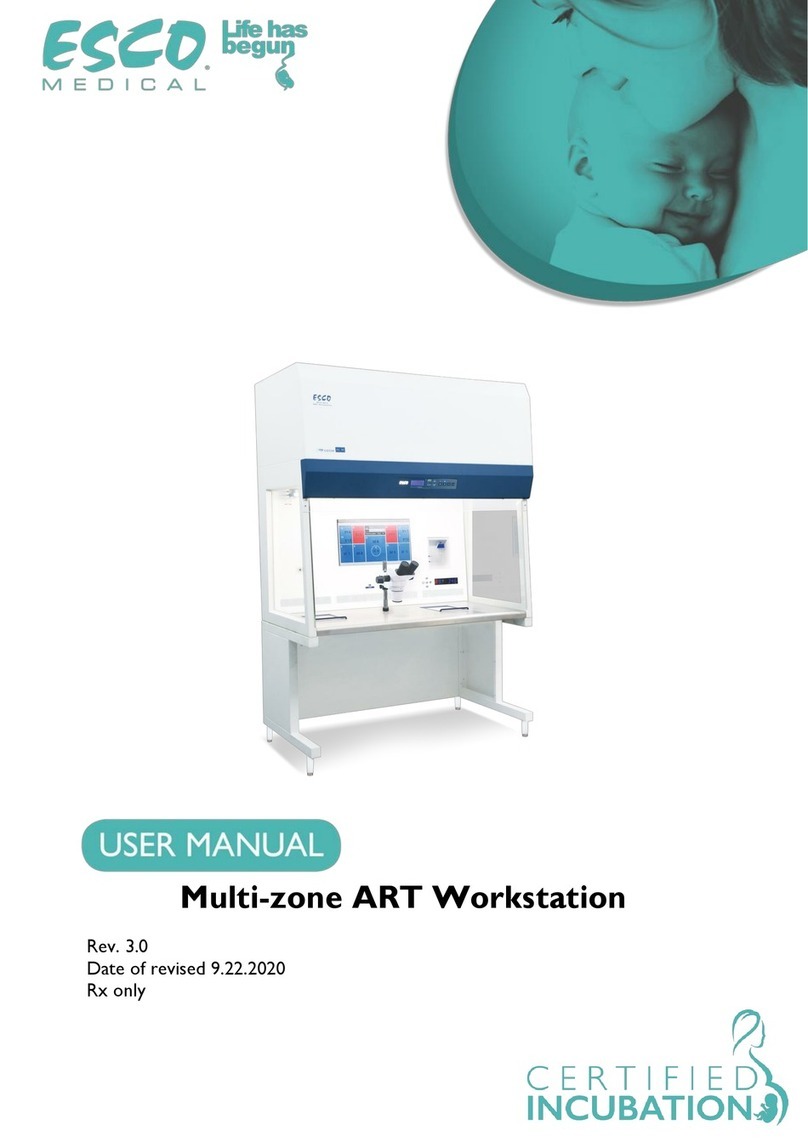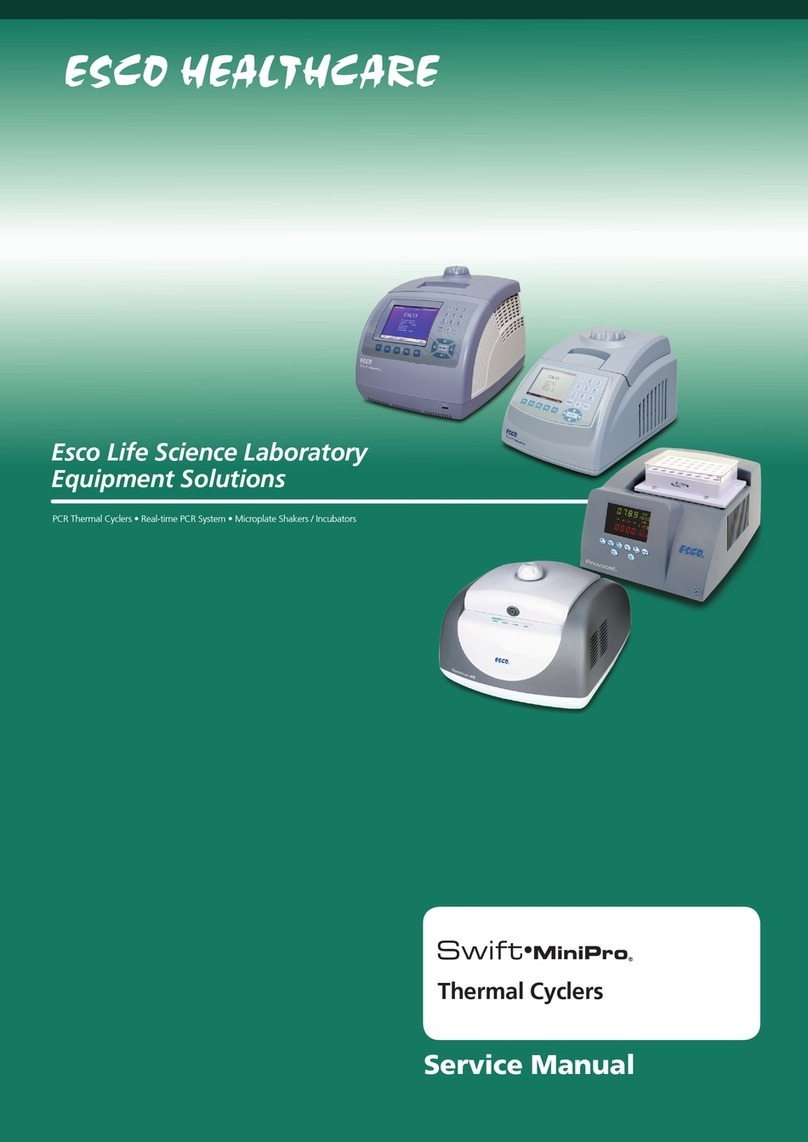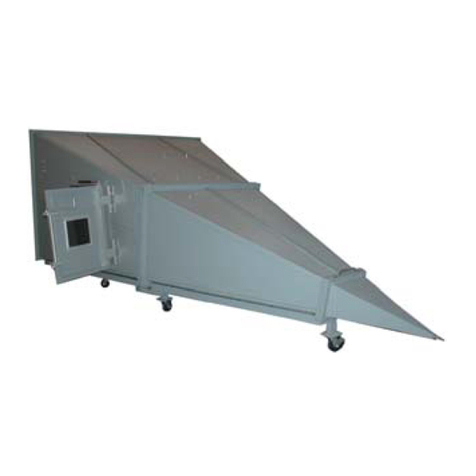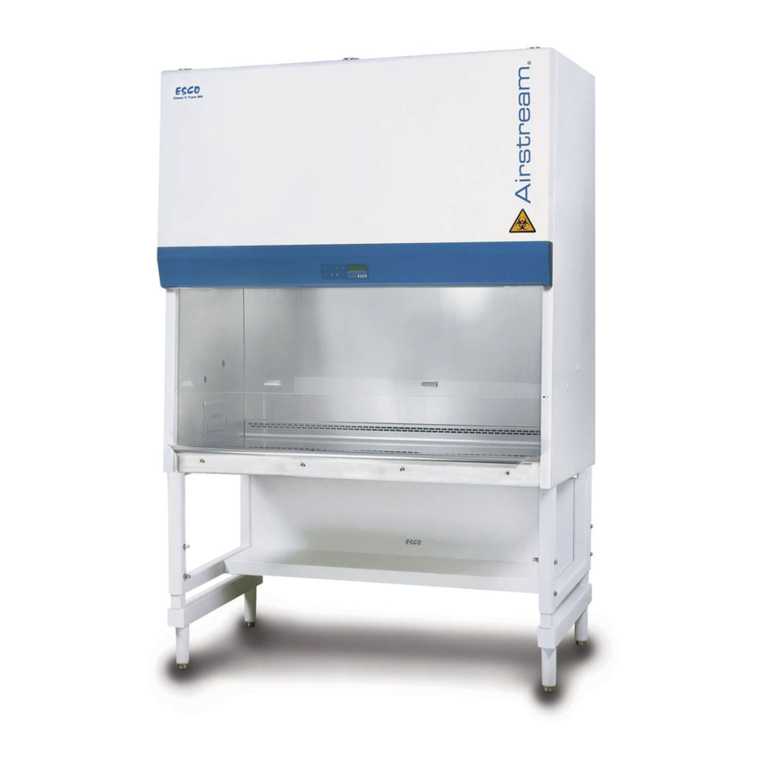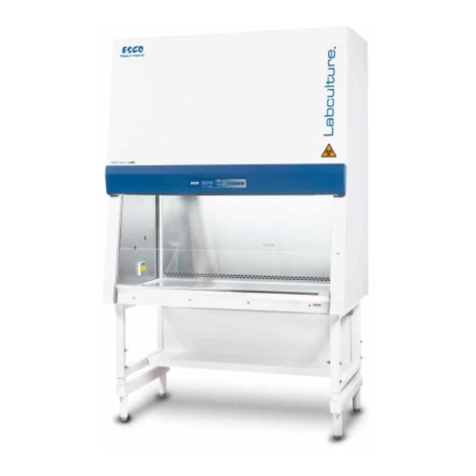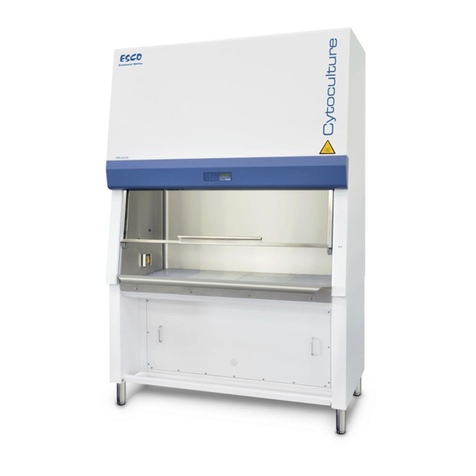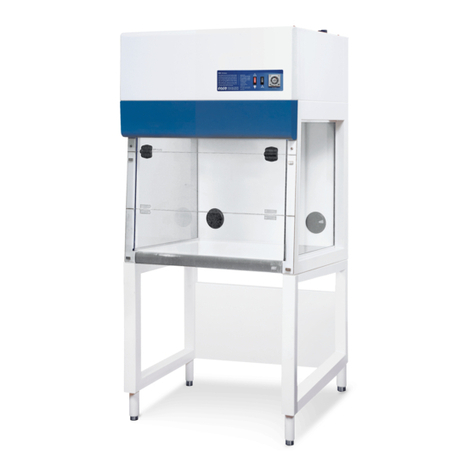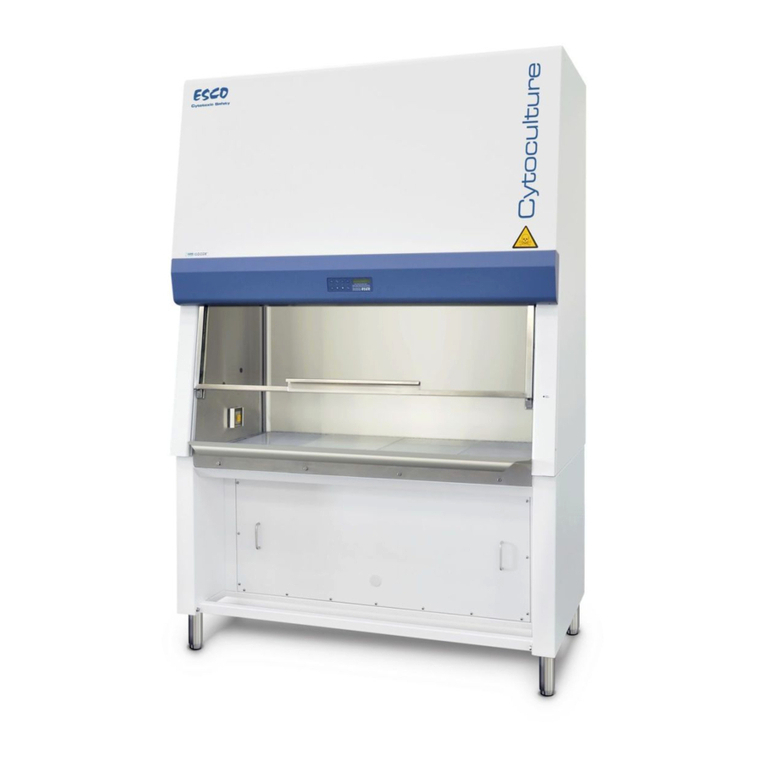
Biological Safety Cabinets • Class II Biological Safety Cabinets
44
Ambient air is pulled through the
perforations located towards the work
zone front to prevent contamination of
the work surface and work product. The
inflow does not mix with the clean air
within the cabinet work zone. Inflow air
travels through a return path toward the
common air plenum (blower plenum) at
the top of the cabinet.
Approximately 32% of the air in the
common plenum is exhausted through
the ULPA filter to the room. The
remaining 68% of the air is passed
through the downflow ULPA filter and
into the work area as a vertical laminar
flow air stream bathing the work surface
in clean air.
The uniform, non-turbulent air stream
protects against cross contamination
within and throughout the work area.
Near the work surface, the downflow
air stream splits with a portion moving
toward the front air grille, and the
remainder moving to the rear air grille.
A small portion of the ULPA filtered
downflow enters the intake perforations
at the side capture zones at a higher
velocity (small blue arrows).
A combination of inflow and downflow
air streams forms an air barrier that
prevents contaminated room air from
entering the work zone, and prevents
work surface emissions from escaping
the work zone.
Air returns to the common air plenum
where the 32% exhaust and 68%
recirculation process is continued.
ULPA-filtered air
Unfiltered / potentially contaminated air
Room air / Inflow air
Cabinet Filtration System
Side capture zones
Dynamic air barrier, inflow and forward-directed downflow air converge
• Continuous monitoring of cabinet
airow is displayed on a bright, easy-to-
read LCD panel.
• Two integrated, temperature-compen-
sated, true airflow velocity sensors
provides an accurate airow reading
despite room temperature uctuation.
• All electronic parts are contained inside
a plug-and-play module that permits
easy exchange if required.
• Microprocessor software updates are
available from Esco for download via
the Internet.
Sentinel functions are factory set to default
to ON or OFF, depending on worldwide
destination and local preferences. Default
settings can be user activated through the
touchpad data entry access.
• Automatic start-up sequence will pre-
pare the cabinet for normal operation
and advise when safe conditions are
established.
• An administrator controlled PIN
(Personal Identication Number) can be
set to restrict access to main menu.
• The airow alarm can be activated or
deactivated depending on user prefer-
ence and nature of the work.
Consult your Esco Operating Manual
or contact your Sales Representative
for information on user-preference
programming capabilities built into the
Sentinel microprocessor platform.
Cabinet Construction
Robust construction and enhanced safety
features qualify the cabinet for the most
demanding laboratory applications. The
cabinet is fully assembled and ready to install
and operate when shipped.
• The interior work area is formed from a
single piece of stainless-steel with large
radius corners to simplify cleaning.
• The cabinet work zone has no welded
joints to collect contaminants or rust.
• All stainless steel work surfaces are
accessible for cleaning.
• Tray components lift and remove to
provide easy access and encourage
surface decontamination.
• A recessed central area and stainless
steel drain pan channels spills and
prevent liquids from entering the lower
ltration and blower systems.
• The drain pan is flush with the side
walls to eliminate concealed or hard-
to-clean spaces.
• There are no screws in on the front or
sides to trap contaminants or complicate
cleaning.
• Optional service ttings are offset for
easier access.
• External surfaces are coated with Esco
Isocide™ antimicrobial coating to protect
against surface contamination and
inhibit bacterial growth. Isocide
eliminates 99.9% of surface bacteria
within 24 hours of exposure.
Comfortable Ergonomic Design
The LP2 cabinet is engineered for comfort,
utility value and safety.
• The 5° angled viewing window and
narrow profile front grille improves
reach into the work area.
• The instant-start 5000k fluorescent
lamp operates on an electronic ballast
to reduce heat, improve comfort and
conserve energy.
Esco Centrifugal Fan with External Rotor Motor (left) vs.
Conventional Fan with Standard Motor (right)
Esco cabinets use German made ebm-papst®
permanently lubricated, centrifugal motor/
blowers with external rotor designs.
Integrated blades narrow the profile and
eliminate need for a motor shaft.
Motors are selected for energy efficiency,
compact design, and flat profile. The completely
integrated assembly optimizes motor cooling.
All rotating parts are unitized and balanced
for smooth, quiet, vibration-free operation.
